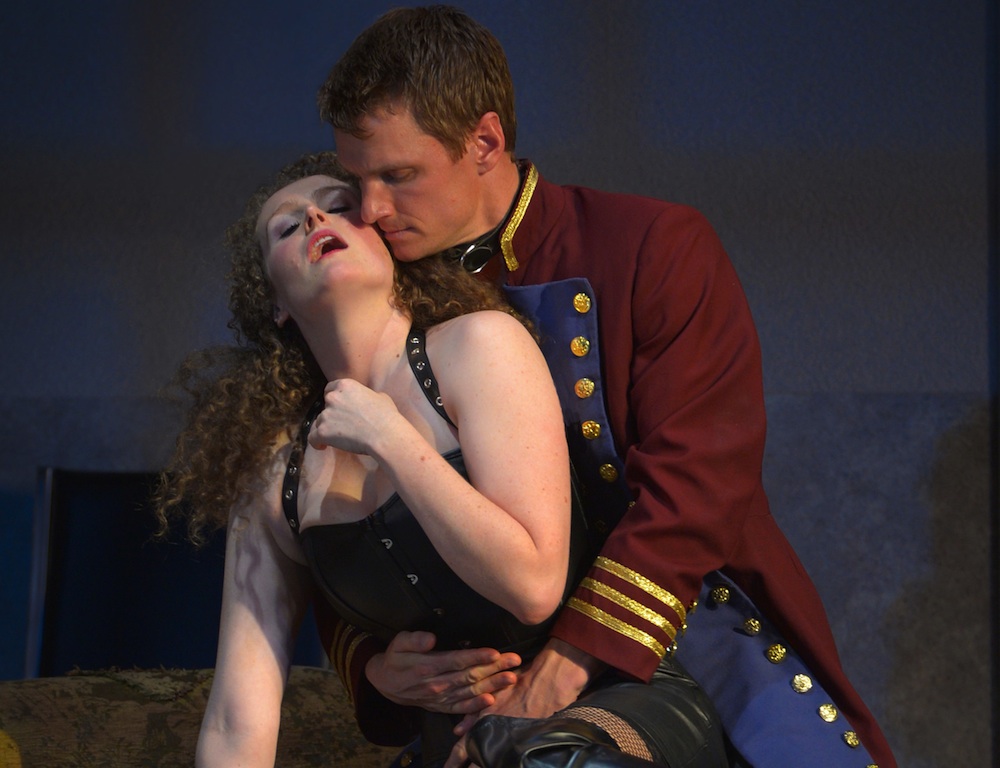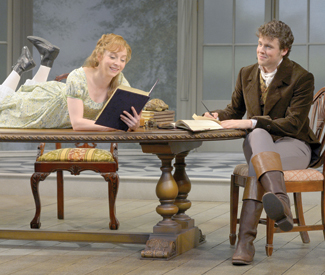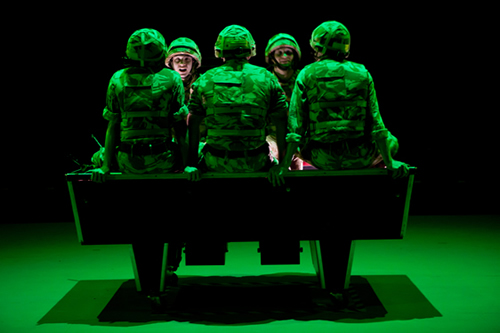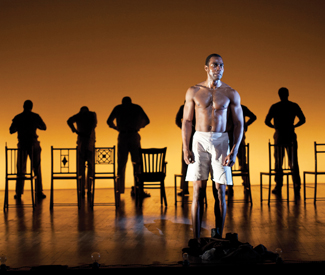Good lord, this play is hot, hot, hot. Rave reviews of its run in New York last year — mostly heralding the rise of Broadway newcomer Nina Arianda — gave me pause. Could our own A.C.T. pull off this super-steamy, sometimes-harrowing, consistently enthralling sex comedy without Arianda’s now-famous starpower?
No fear. Sensational actors Brenda Meaney and Henry Clarke stole the audience’s breath away, when playwright David Ives’ perverse 2010 take on novelist Leopold von Sacher-Masoch’s perverse 1870 masterpiece opened at A.C.T. last night. Prepare to be intellectually and emotionally (and even a bit physically) whipped, beaten, and thrilled into submission.
And yes, there will be a touch of Velvet Underground.
The basic story: Thomas (Henry) is auditioning actresses for a play he’s written and will direct, based on Sacher-Masoch’s groundbreaking 19th-century “romance,” Venus in Fur, from which the term “S&M” is derived. A hyperenergetic Vanda (Meaney), one of those wonderfully scattered-but-brassy NYC actress-types, bursts in late and cajoles Henry into giving her a shot.
But how does she already know the whole script, which hasn’t been released yet, by heart — not to mention intimate details of Henry’s personal life? How does she slip so effortlessly and expertly into the role of her dominatrix namesake in the novel, and eventually take on aspects of a goddess herself? And how is it that Henry, too, channels Venus in Fur’s love-smitten sex slave with such erotic aplomb?
Mysteries and personalities start multiplying as the pair engages in a vertiginous pas de deux, slipping surreally between contemporary arguments about sexism and gender roles and smokin’ hot scenes of 19th century parlor-sex games. Soon it all begins to slip off the rails into a timeless mystery of psychological conquest and mythological lust, with more than a little taste of danger.
Meaney, lanky and sensuous, and Clarke, tightly wound yet passionate, held the crowd spellbound for an intermissionless, many times hilarious 90 minutes. (Casey Stangl’s ace direction kept things moving swiftly yet with admirable lucidity.) One excruciatingly erotic scene, featuring a pair of thigh-high leather boots, almost turned me straight! Which may well be one of Ives’ points — in the context of human power dynamics and fetish objects, some desires transcend all contemporary sexual categories, and appeal to murkier, more ancient aspects within us.
VENUS IN FUR
Through April 13
American Conservatory Theater
Geary Theater
415 Geary, SF.




